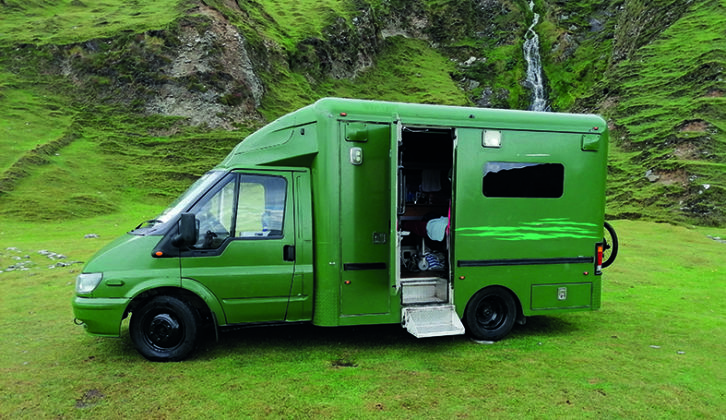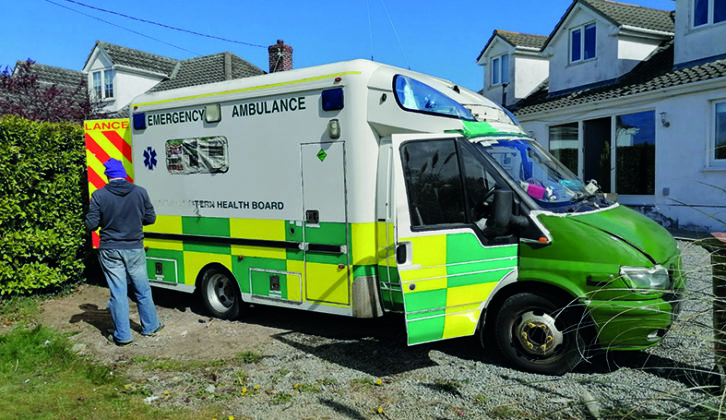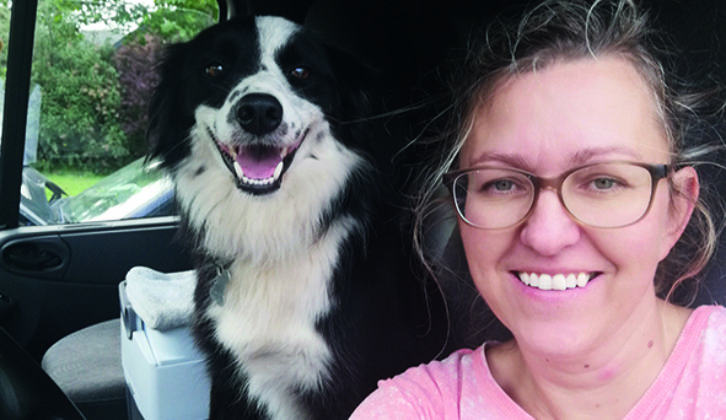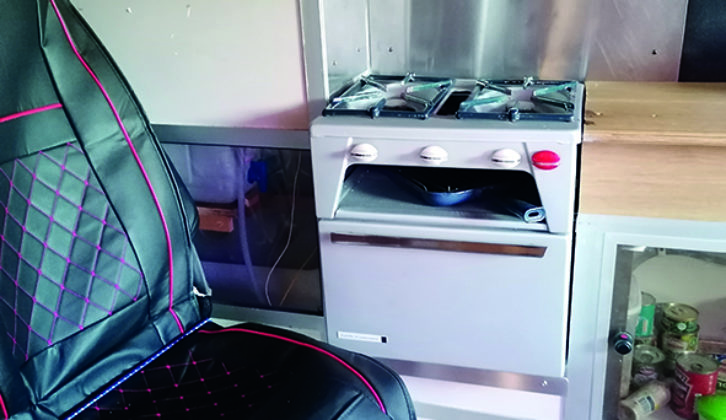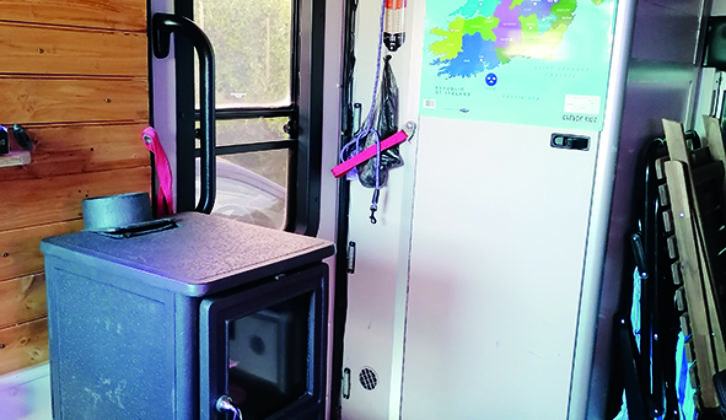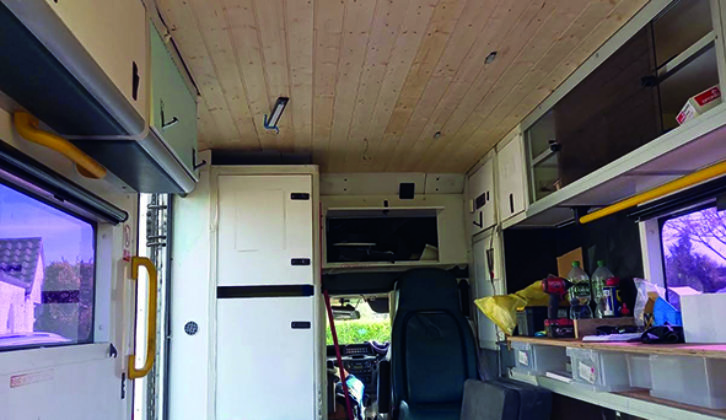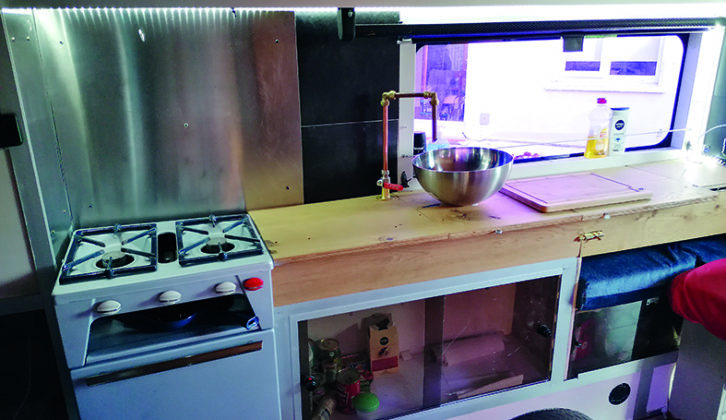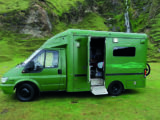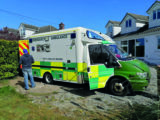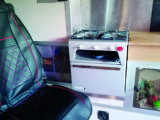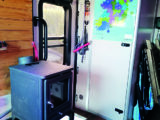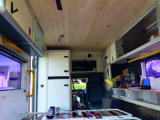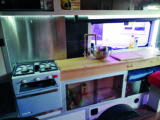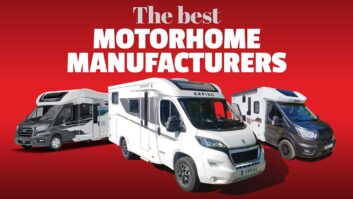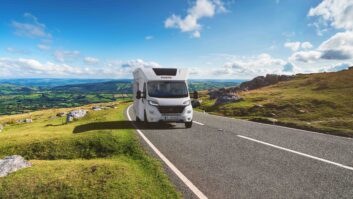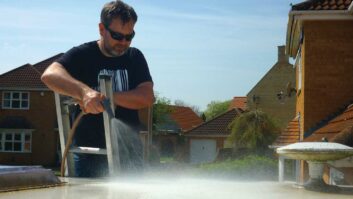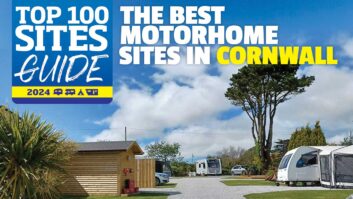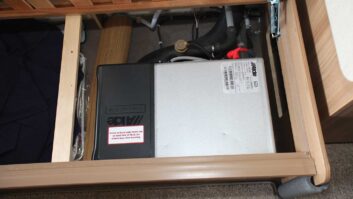Van conversions come in all shapes and sizes, from horse boxes to London buses, but an ambulance? Why not, thought Dublin-based couple Michael Kelly and Catherine Gorman, who took on the unique challenge of converting an emergency vehicle into the motorhome of their dreams.
Catherine and Michael were looking pretty relaxed when I chatted with them over FaceTime, but it became clear as we talked that, while a labour of love, the project has been a real challenge. Fortunately, Michael, who is a fabricator by trade, has plenty of experience in upgrading motorhomes – he’s been an owner of campervans for some 20 years and throughout that time, has adapted and converted many vans for friends and family.
“Michael bought the ambulance around a year ago, ” says Catherine. “He was originally going to use it for parts for another project, but then decided to start working on it as a campervan for the two of us.”
Michael explains he was offered the vehicle by someone who had a friend in the recovery business, but initially he was reluctant to buy it. “The problem is that most ambulances are over 3.5 tonnes, so you need a class C licence, making it harder to sell on. But then I thought that I could use it for parts, or keep it.”
Complete refit required
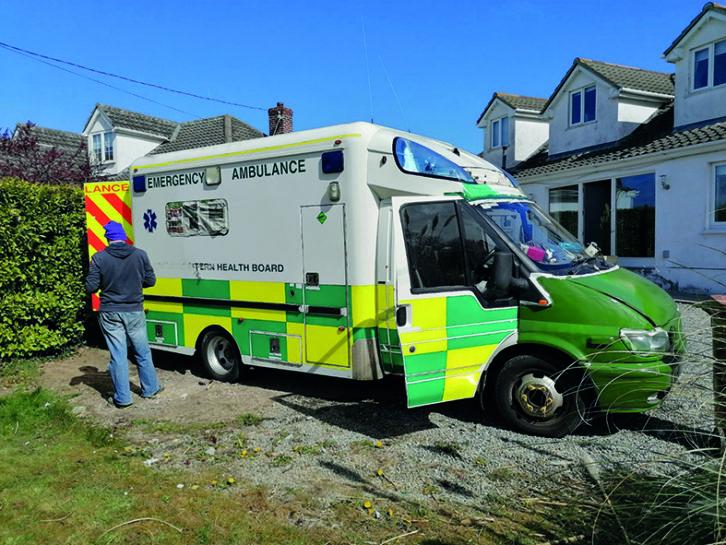
The ambulance, a 2004 Ford Transit Model 6, needed a complete refit. Michael explains: “The Model 6 is renowned for its flimsy body work and is prone to rust, but it has an ultra-reliable engine and gearbox – that’s why I bought it.”
The whole interior was gutted, apart from the shelving, comprised of aluminium units that are interlinked to the floor.
“The basic structure of the van is that it’s a square box that is double length,” says Michael. “There is aluminium on the inside. The structures for all the shelves are interlinked – the top ones come down a rail and the bottom ones click into it. It’s like Meccano, the way they all fit together. I shortened them, but left most of those sections in.”
The rails used to move beds in and out of the ambulance had to be removed, as did everything on the roof, including a long stream of lights.
One of the initial problems to overcome was that the power on ambulances of this type will not run for longer than 15 minutes without the engine on. Michael couldn’t understand why everything kept switching off after 15 minutes.
Eventually he phoned the main agent in Ireland for the manufacturer of the ambulances, and discovered the 15-minute cut-off is a deliberate design feature required to accommodate the ambulances many electrical systems, and that it had a sensor that cut the power. Ultimately, he had to rewire the vehicle and put in a separate fuse board. “The original wiring was too complicated to use,” Michael says. “There were five different boxes for the strobe lighting alone.”
Powered by solar energy
Internal power now comes from two 110Ah leisure batteries that are charged from a solar panel or while the vehicle is running.
The ‘van has a splitter switch up front that can be turned on or off, and gives sufficient power for six days without having to plug in to an electric hook-up. So all of the appliances and lights can be used without needing a charge for a significant period of time. The couple found this particularly useful when touring in the west of Ireland, where there are fewer sites and they often go off-grid.
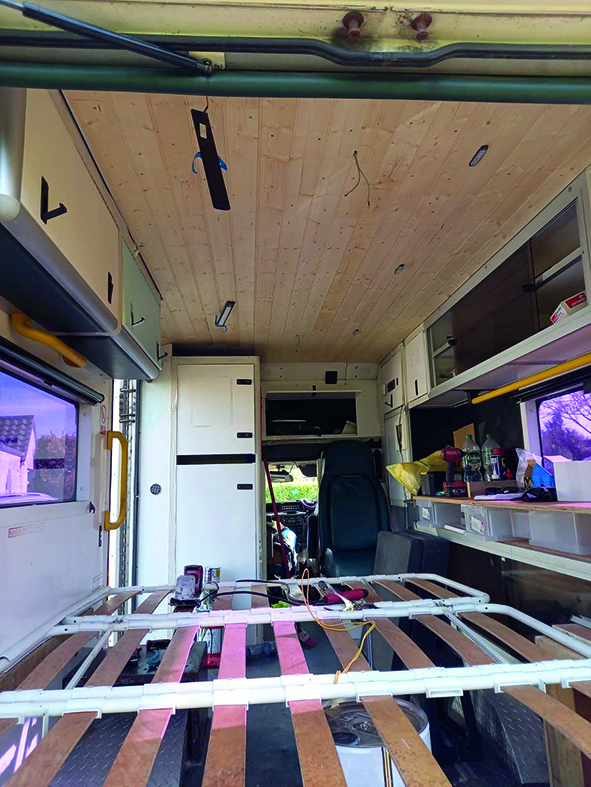
Catherine gave me a quick video tour of the ‘van, so I could see the many features Michael has installed. The double sofa bed can be pulled out to a transverse position, yet is still long enough to accommodate two six-footers. The ambulance is 6ft wide, and having the bed across the width creates more living space. The bed slides out from the sofa and takes only a few seconds to assemble.
A wet room provides a shower, toilet and basin, all of which run off one pump, and the plan is to install an on-demand gas heater for the shower, which will also save space – there will be no need to have a separate water tank.
Elsewhere, there’s a chest fridge that sits in the metal frame between the seats up front and runs off the 12V supply. The cab is separated from the main accommodation by a sliding door, which helps with the soundproofing – a useful addition because this is where the couple’s dog, Jessie, sleeps when they are on their travels.
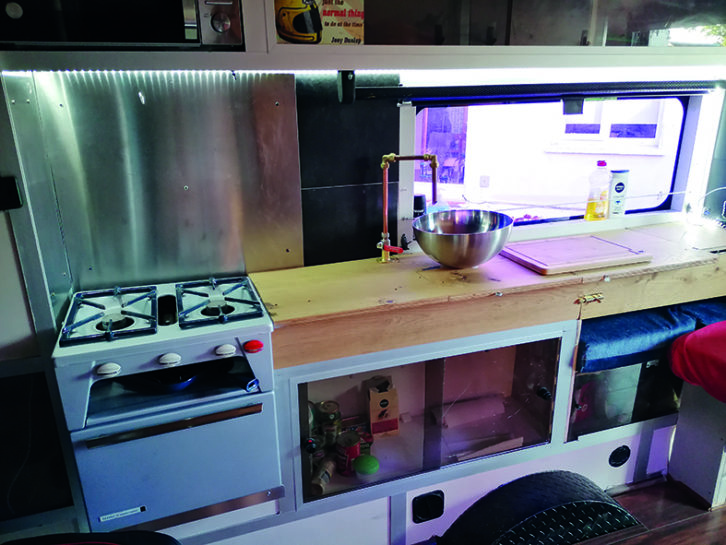
Other features include a skylight, a 12V smart TV, a stove and a night diesel heater with remote control. There’s a third belted seat which swivels and provides storage underneath, a snazzy bowl sink and a small gas oven and grill that Catherine inherited from her father. “It’s about 60 years old, but has never been used,” she says.
The amount of storage space – a legacy of the ambulance’s shelving – is truly impressive, and robust enough to hold a security safe and plenty of other accessories, which frees up the extensive kitchen work surfaces.
Outside, there is access to gas bottle storage, a fire extinguisher, and a water tank. There’s also a bike rack and, on the roof, a 60W solar panel.
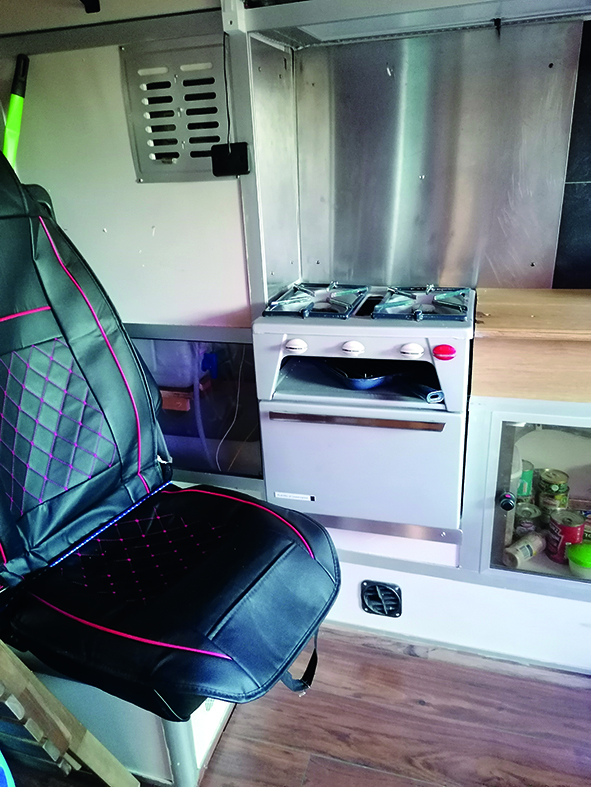
Now fully painted in racing green and with its hospital markings gone, the ‘van looks in mint condition. But is it finished? “It will never be finished,” laughs Catherine.
She’s joking, of course. In fact, the couple have already used it for several trips and have just a few extra features to add to complete the job.
“I just need to connect the stove flue,” says Michael. “Otherwise it’s finished, although we might change the shower wet board to another colour. I like the black marble-effect one.”
Building an extension
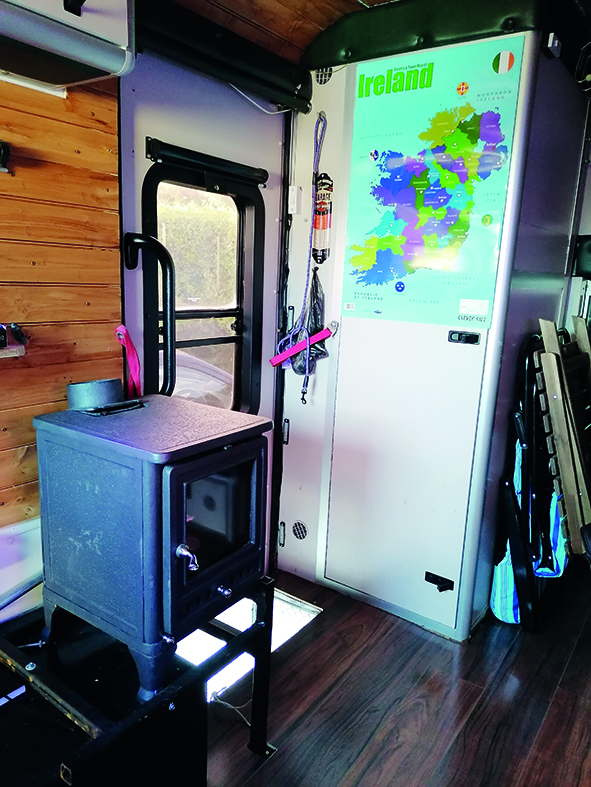
There are also plans to add a roof rack, and they have thought about the possibility of a further bedroom in the area above the cab, although that will be a significant project in itself.
For now, though, they are happy to enjoy the freedom the ambulance offers. Michael says: “We’ve done the west of Ireland – the Wild Atlantic Way. And we’ve been to Achill Island (off the coast at County Mayo), where there are good places to camp beside the beach.
“We also went to Glendalough in Wicklow and Brittas Bay, which is south of Dublin. On our next trip, we plan to go to Waterford, then back to do the Wild Atlantic Way around Donegal. It depends on the weather – when it’s misty in Ireland, you have to head south, but sometimes you can get a couple of good weeks in September.”
The ambulance cost €4000 to buy and another €3500 for materials, although they upcycled a lot of parts from other projects. They now value the completed vehicle at €10,500 – a reasonable return, but as they point out, it was a lot of work.
From start to finish, the project took eight weeks, working on it four or five days a week. That has not deterred the couple from future projects; in fact, with the upsurge in interest in campers, Michael is considering starting his own conversion business.
First on the cards, though, is a trip to Spain, where a friend is holding some campervan parts for them to collect. “We’ll cross from Wexford to Santander, then make our way to a place an hour or so north of Alicante – we can’t wait!”
Readers in Ireland interested in a camper conversion can email Michael at [email protected]
If you liked this… READ THESE:
The pros and cons of owning a classic campervan
Creating a horsebox conversion
If you’ve enjoyed reading this article, why not get the latest news, reviews and features delivered direct to your door or inbox every month. Take advantage of our brilliant Practical Motorhome magazine SUBSCRIBERS’ OFFER and SIGN UP TO OUR NEWSLETTER for regular weekly updates on all things motorhome related.
The ambulance is 6ft wide, and having the bed across the width creates more living space
